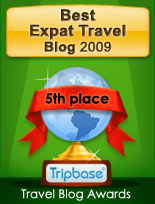Alina Gallo, artist
This year, I met a young painter who was memorializing key events that have occurred in the Middle East and North Africa through her art. Her name is Alina Gallo. She hails from Long Island, New York. When I met Alina, she was living here in Istanbul, inspired by the events of the region.
Berkin Elvan was
14 years old when he
went out of the house
to fetch bread for his family's dinner.
Struck by a tear gas canister
to the head,
as protests were occurring
in his neighborhood,
Berkin lingered
in a coma for 269 days,
and then died.
In learning about Alina's art, one of the first things that struck me was the humility with which she approached her work. When I first saw her studies for the miniature
commemorating the funeral of Berkin Elvan, I was moved to tears. "this is a masterpiece," I told her.
Alina demurred. She thought of herself as one artist in a long line of miniature painters who documented moments of history and cultural importance. She drew attention away from her own contribution.
"It is through me, not of me. That is the power of the miniature form. It becomes an expression of shared experience and collective consciousness. This is the beauty of creative energy." she said.
Alina's medium is egg tempura, a paint made with egg yolks, ground pigments and water. One of her paint brushes has just three hairs, another has just two. She works with a magnifying glass and illustrator's glasses.
Berkin Elvan's Funeral March, 2014
Text with painting: What happens if you and your family live near a place in Istanbul where all of the protests are happening? Fourteen-year-old Berkin Elvan, ran to the store for bread as his family was settling down for dinner. Berkin's family were Kurdish Alevis, so minorities both ethically and religiously in Turkey. Berkin was shot squarely in the head with a tear-gas container by an Istanbul policeman. 15-year-old Berkin Elvan's funeral march took place on March 12, 2014. Elvan died after 296 days in a coma after being struck on the head by a government tear gas canister while going out to get bread for his family during the Gezi protests in June 2013. After his death, thousands proceeded with his coffin to the funeral ceremony and cemetery. As a symbolic gesture many bakeries closed that day and citizens tied loaves of bread to doors and windows with black ribbons. As soon as he was buried, mourners and protesters were immediately met with police crack-downs all over the city of Istanbul and in other cities across Turkey.
Alina's work reminded me of another artist, Walt Whitman, who documented through poetry and prose, youth spent and lost working toward noble visions during the American Civil War.
Back then, Walt Whitman would sit next to the bedside of a young person who gave his all in pursuit of a better future for his nation and was destined to pass on.
It mattered to Whitman that his reader know the person behind the sacrifice for a noble cause: what the young person cared about, who he was sweet on, how he wanted to be remembered to his mother.
In humanizing the individuals behind a great movement, it was as if he said to his audience, "take in the magnificence and the ordinariness of this human being. Feel this loss with me."
Berkin Elvan may not have been of the Gezi protests, but he was one of the causalities of casually-used excessive force.
Alina documented the loss of a sweet boy, that many Turks, and others who were watching, felt deeply. Today would have been Berkin Elvan's 16th birthday.
Educated Gezi youth
literally couldn't wait
to contribute
to their country.
Their enthusiasm
was not welcomed.
I was grateful that Alina was in Istanbul to honor the struggles of Gezi Park youth with her attention and work. Like me, she observed the events, but wasn't of the events, She painted it one step removed. I felt like she was capturing what I was watching. The Turks, themselves, they were the ones actually living it.
The Gezi Youth Generation, members of a secular movement to save an urban park in a city where parks are in short supply, brought an idealism and spirituality to their quest that was deeply moving to experience first-hand. There was purity and sweetness and goodness in that park. You could feel it. It was an incredible privilege to visit it.
The Gezi youth generation is deeply cognizant of all the sacrifices made by the founding generation of Turkish citizens. Their deep awareness of this can only be called reverence. Watching them gather, sing, camp, help each other, celebrate their democratic wishes with a sense of community that is as rare as it was special made me contemplate the sacrifices of the Turkish people at the beginning of their nation. Now the new nation was bearing fruit. Those sacrifices had found artistic, intellectual, and spiritual flowering with this generation ninety years later.
The new youth movement was expressed with a collective wish, not for more of the new-found prosperity Turkey has achieved, but a desire to save a beloved spot from over-development, a traditional tea garden, and the trees and park that surrounded it in the center of downtown Istanbul.
A highly rational (not emotional) Turkish mathematician said to me that, at that moment, if the Turkish prime minister had held out a hand, and said, "I too was once young. I too have known what it was to dream," he would have emerged larger than before. But that isn't what happened. His heart wasn't in that place. Instead, he responded with cold action, deriding all of the young protesters as çapulcu, or 'thugs' in Turkish.
Istiklal Riots
"Everywhere is Taksim!"
Kadikoy Riots
I loved the painting of "Berkin Elvan's Funeral March" and bought it. I then commissioned Alina to do a painting of what happened in my neighborhood during Gezi
using my experience as a resident and
this iconic image by photographer Daniel Etter as inspiration. Below is the sketch in progress.
Gezi Park Movement: June 1st
Alina wrote: "Sketch in progress for a piece depicting a night during the Gezi Park movement in 2013 in Beşiktaş, Istanbul. I have been reconnecting to the Gezi movement with this work- seeing and reading again so many stories of the community coming together for each other and their country. In the foreground waves break up against the pier along sea. Nature in this context reminds me of what holds us all, what cleans the air and refreshes energies amid turmoil. The flag bearer stands amid teargas during the riots ... in Beşiktaş on the night of June 1. A Guy Fawkes mask lies on the ground and a broken television in the pile of barricades to reflect the media situation in turkey as well as an evolution towards a social media landscape. In the apartment above families bang pots on the balcony in support and through the trees is Gezi on the hill with a backhoe truck looming."
Sleepers in Gezi
Text with painting: “To contest the urban development plan for
Istanbul’s Taksim Gezi Park a wave of demonstrations and civil unrest in Turkey
began on 28 May, 2013. Subsequently, supporting protests and strikes took place
across Turkey protesting a wide range of concerns, at the core of which were
issues of freedom of the press, of expression, assembly, and the government’s
encroachment on Turkey’s secularism. Now, having been spared destruction, Gezi
Park and its famous sycamore trees have also become a sanctuary for many Syrian
refugee families. In Turkey, alone the total number of registered Syrian
refugees (Istanbul’s refugees are mianly unregistered) has reached over 800,000
since the onset of the Syrian civil war. Here, those displaced by war sleep,
roll their cigarettes and quietly congregate in the morning hours. Şişli Camii
lies in the distance and through the trees cranes cross the sky. The Bosphorus
forms a migration bottleneck for thousands of birds as they travel from Europe
into the Middle East and Africa, a parallel and ancient narrative of mass
movement between continents.” ~ Alina Gallo
Alina is applying for a Fulbright Scholar
fellowship for the United Arab Emirates. I’m pleased the idea was sparked when
she visited my “Fete for Fulbrights” this summer. Her goal is to teach young
Emirati women at Zayid University cross-cultural miniature arts and the
technique of egg tempera painting.
Alina’s miniature themes extend beyond
Gezi. That’s the sorrowful part of the Middle East. It keeps supplying iconic
moments. I was deeply touched to see freelance journalist Marie Colvin’s work memorialized.
Ms. Colvin, a dashing international foreign correspondent, who covered the
Syrian civil war zone in an eye patch due to previous moments of daring-do,
lost her life in her quest to share the conflict with a world struggling to
understand.
I urge you, gentle reader, to contemplate
the other beautiful miniatures on Alina’s new website. Our mutual friend,
Catherine Bayar, has written an appreciation of Alina’s work that appeared in
Hand/Eye Magazine.
Additional press on Alina’s work:

























 Who links to me?
Who links to me?
